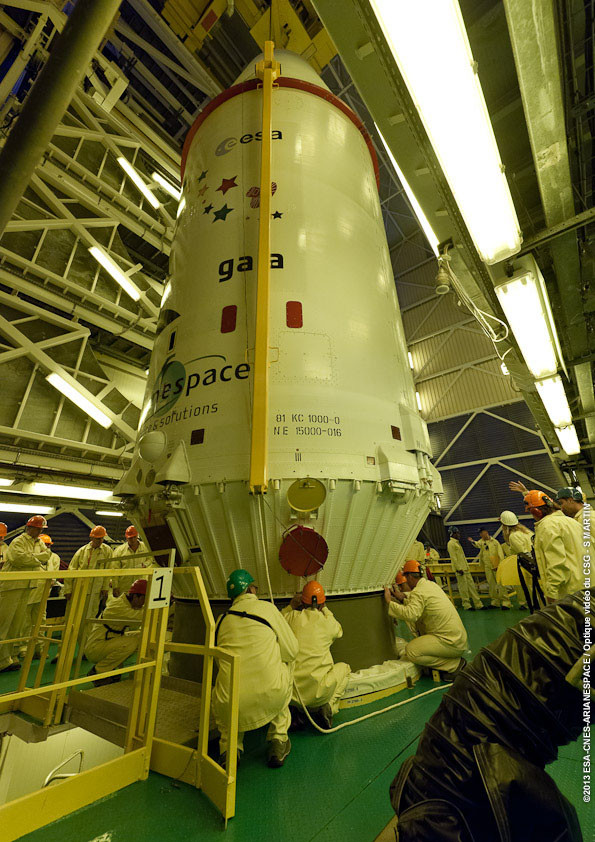Following the success of the astrometric satellite Hipparcos, scientists realized that they could do still better. That is what the European satellite GAIA is doing: It is measuring the positions of millions of stars with a precision of 10-millionths of a second of arc, 100 times better than Hipparcos, and is also cataloguing a billion stars with somewhat less precision. Repeated observations enable the determination of the transverse motion of stars (their “proper motions”), while a spectrograph on board measures their motions along the line of sight (the “radial velocity”) via the Doppler-Fizeau effect of their spectral lines. In this way, the three velocity components of the stellar velocity are thus found. A photometer follows the stellar brightness changes, which are often due to the transit of a planet in front of the stellar disc. It is hoped that with the help of GAIA about 30,000 exoplanets will be discovered, adding to the 3,500 known today.
caption : Preparing for the launch of Gaia - credits : ESA/CNES/Arianespace
